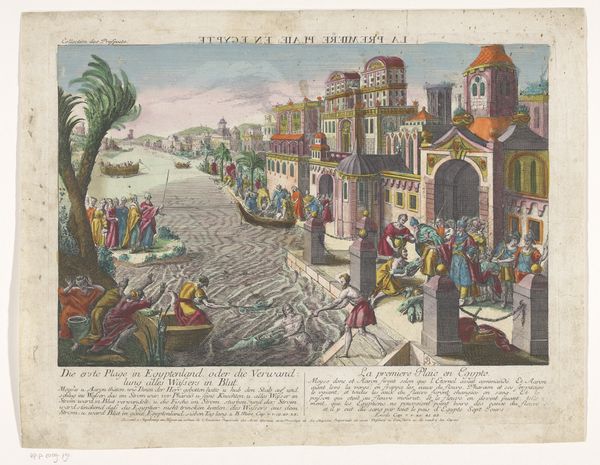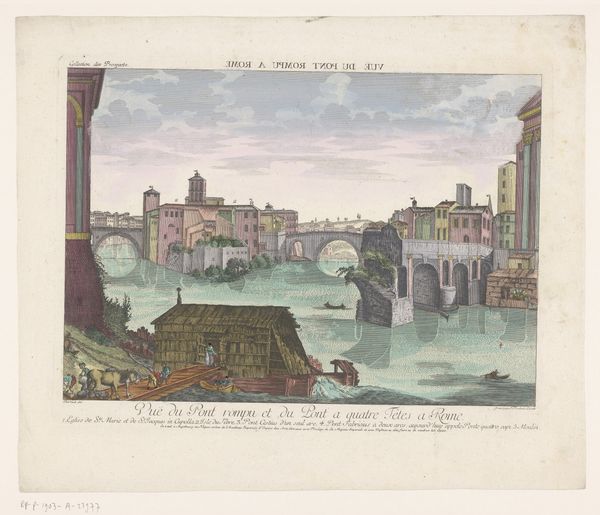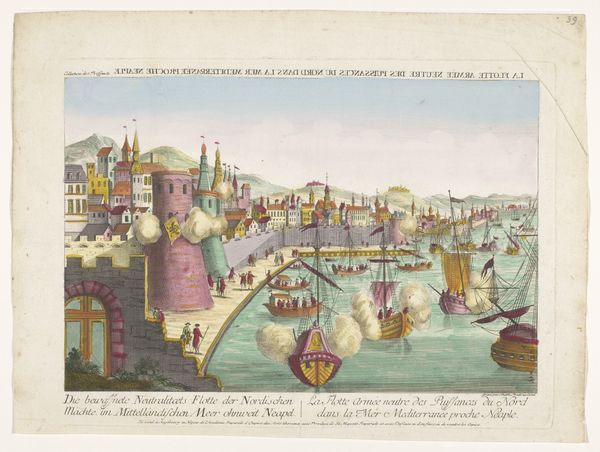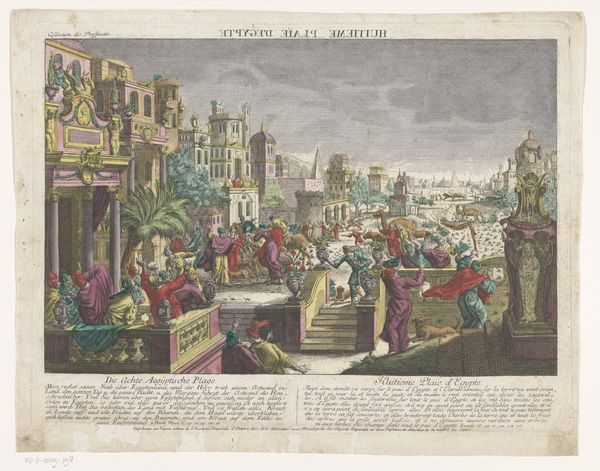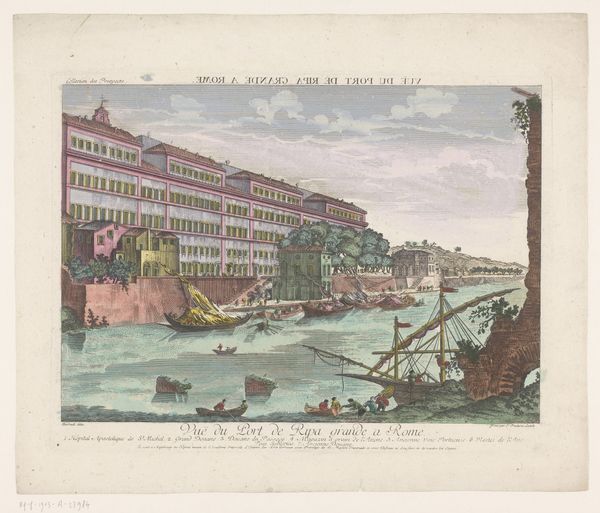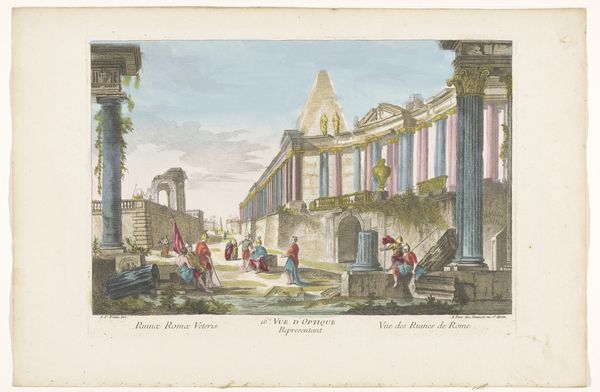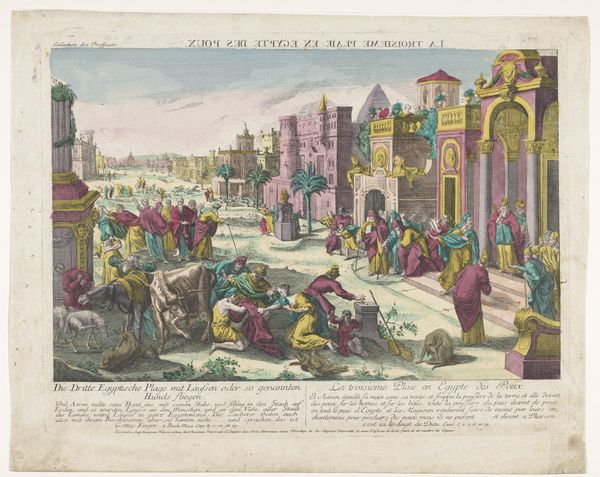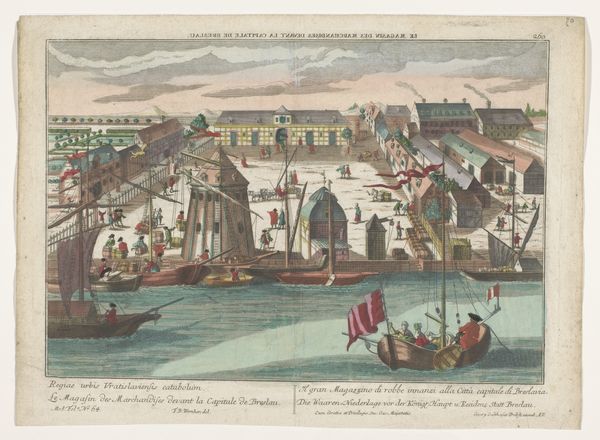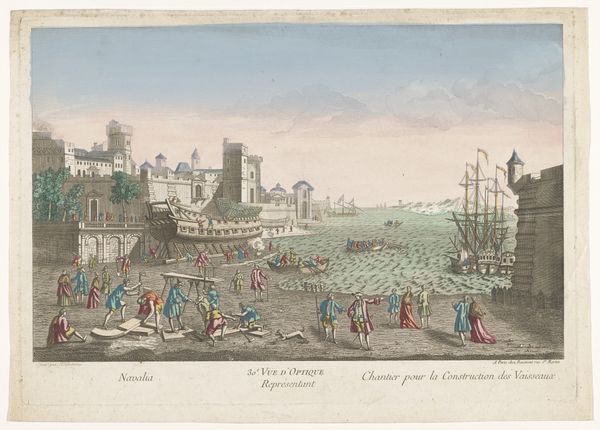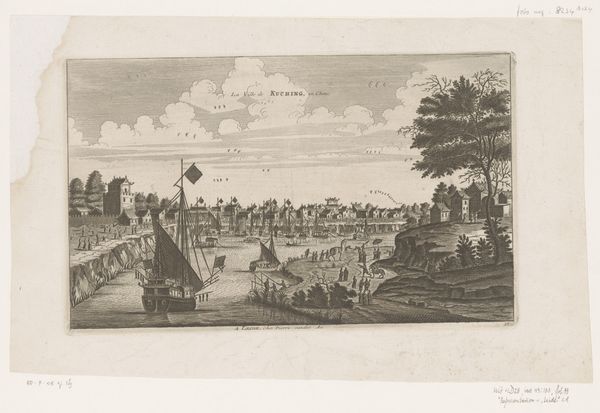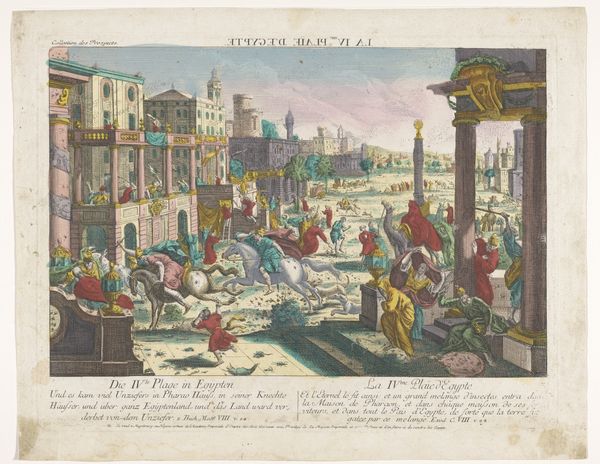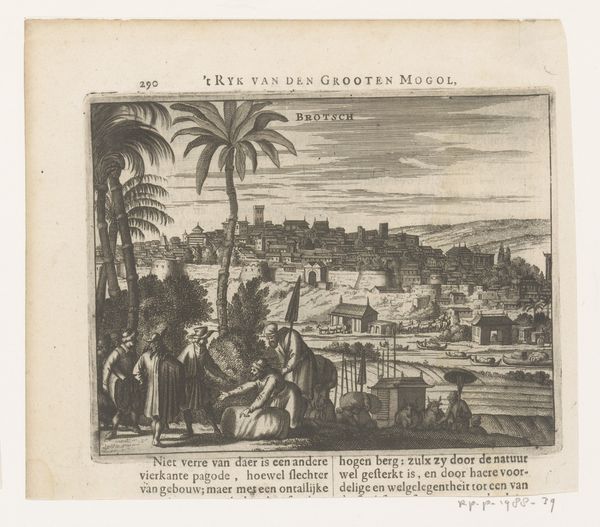
Dimensions: height 333 mm, width 433 mm
Copyright: Rijks Museum: Open Domain
Editor: So, this is “The Second Plague of Egypt,” an etching and engraving print made sometime between 1755 and 1779. It’s quite a busy scene! There's so much chaos packed into a single image. What jumps out at you when you look at this piece? Curator: Oh, absolute bedlam, isn't it? First, the way the artist captures that feeling of biblical wrath, the sheer overwhelming sense of…sliminess. You almost feel the frogs squelching underfoot, even now! It's funny, how they mix high baroque architecture, almost stage set like, with a plague of frogs. I wonder, are the frogs meant to be individuals or an almost faceless mass of "otherness"? Editor: That's interesting, this play between individuality and "otherness" – can you say more about it? Curator: Well, notice how some of the people are rendered with individualized features – horror in their eyes – while the frogs… they’re just frogs. Like a great mass. Think of it historically too – how the West, particularly during this era, depicted plagues and natural disasters visited upon those seen as “foreign” or “other.” Were these artists really attempting to portray sympathy for people they likely thought of as being religiously and culturally apart from themselves? Were they really asking their own contemporary audience to imagine themselves in a similarly horrible predicament? Editor: So, the frogs are almost symbolic? Curator: Absolutely! They aren't just amphibians. They’re vehicles for fear, the unknown. What’s especially fascinating to me, is how it encourages *us*, the viewer, to reflect on what we consider “other.” The horror here is a sort of divine decree, which feels alien, as much as the people shown *were* perhaps seen as “alien”. How else do you imagine this could resonate for today's viewer? Editor: It's thought-provoking how art from centuries ago can still spark such relevant questions. Thanks! Curator: Precisely! It tickles my mind – the idea of using historical lenses to reflect contemporary thinking. Wonderful.
Comments
No comments
Be the first to comment and join the conversation on the ultimate creative platform.
